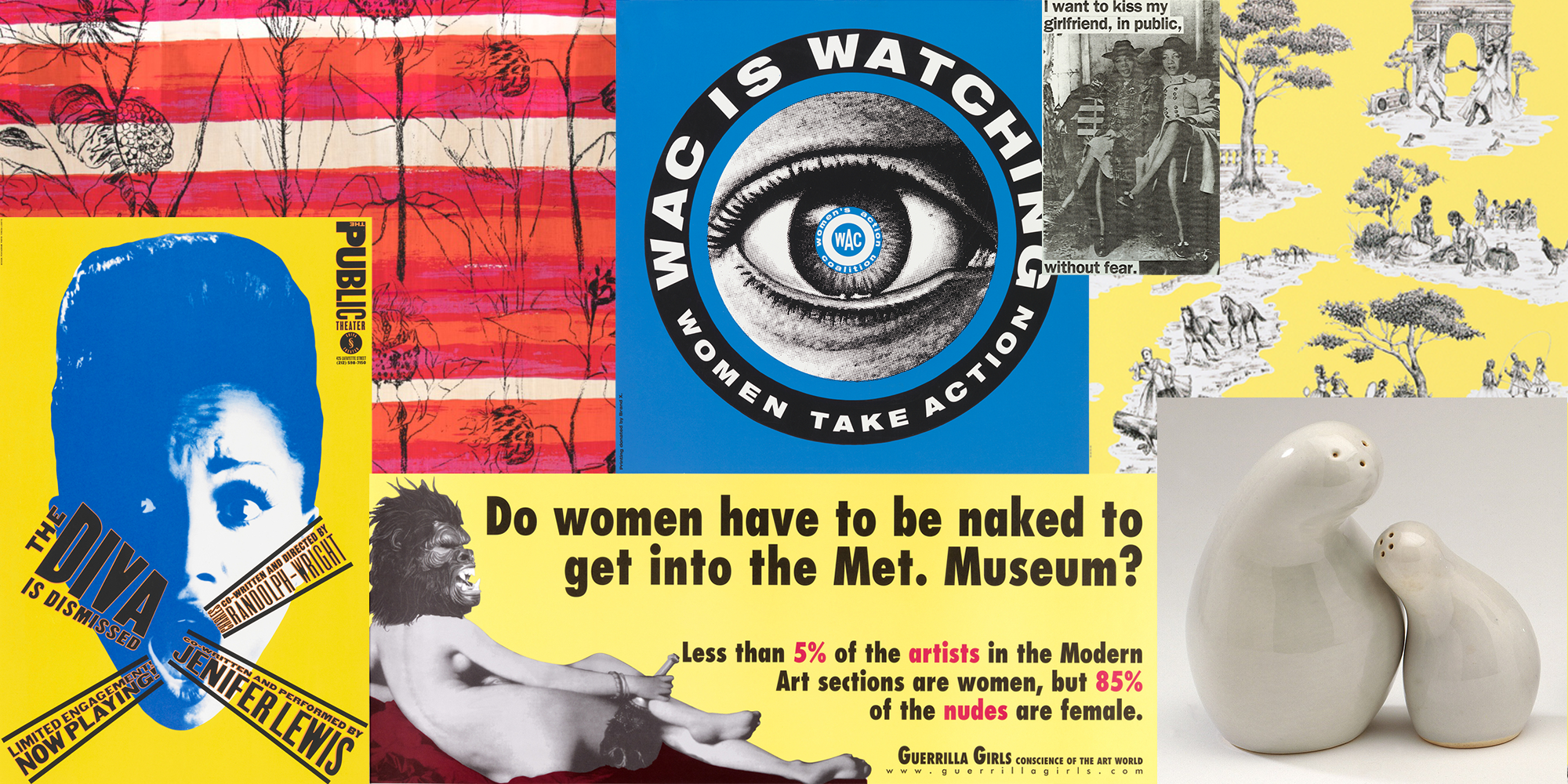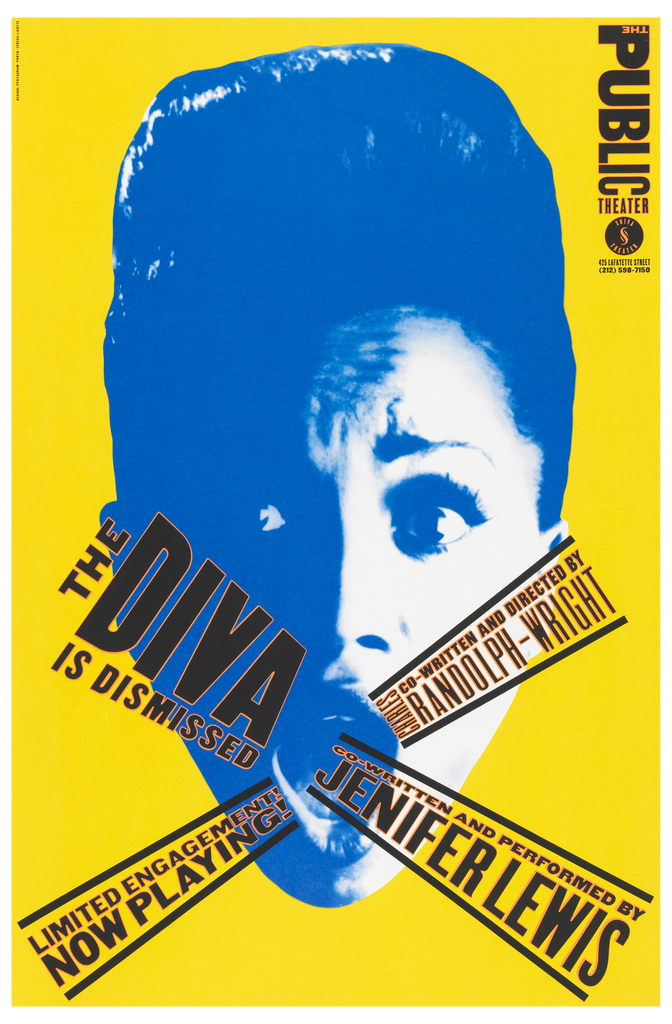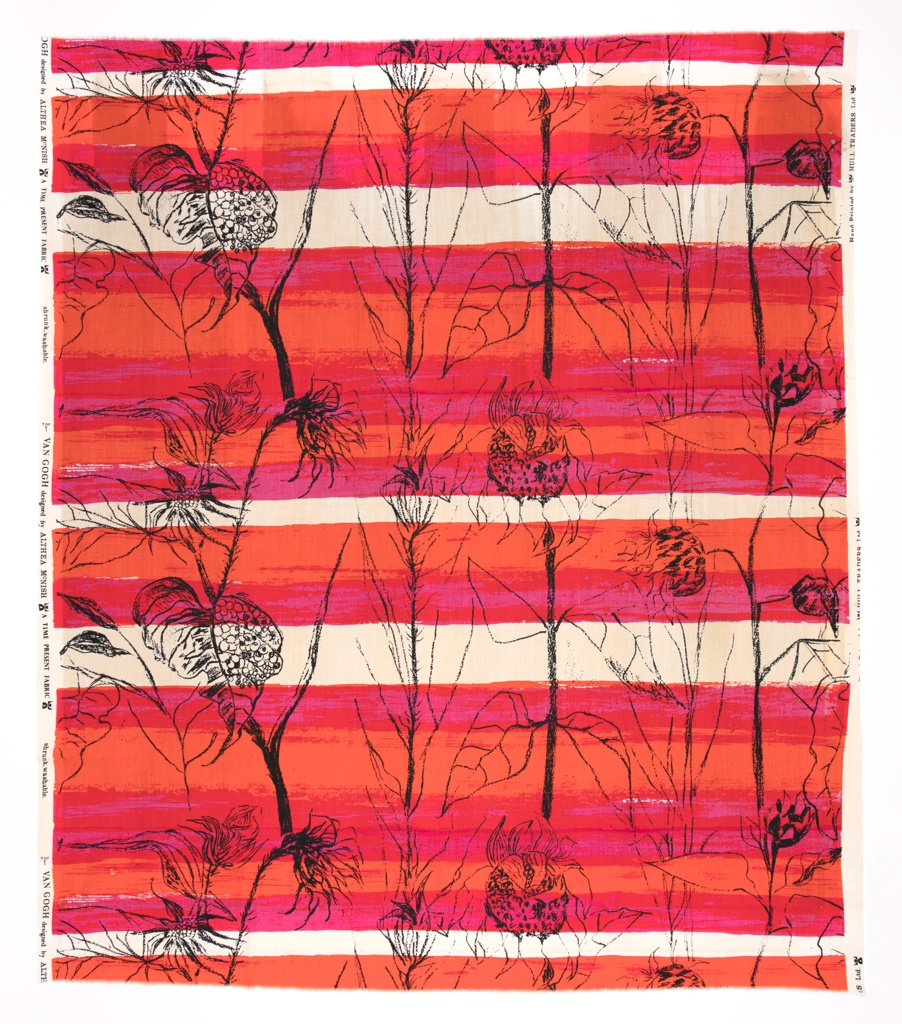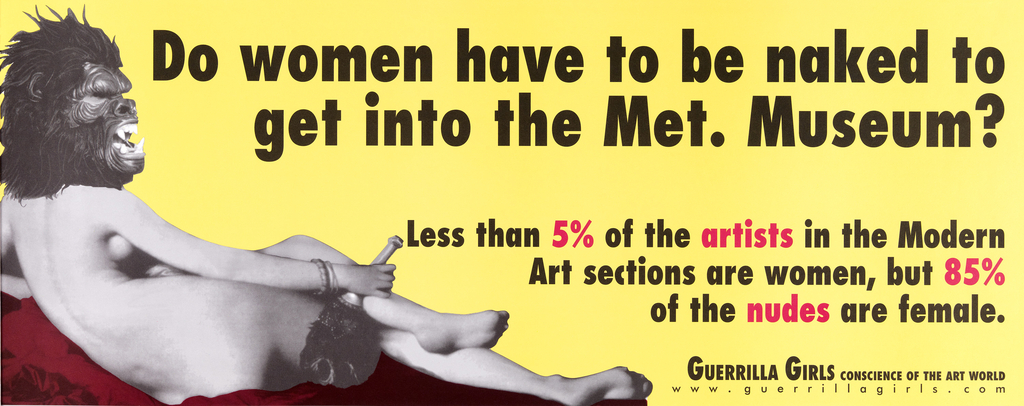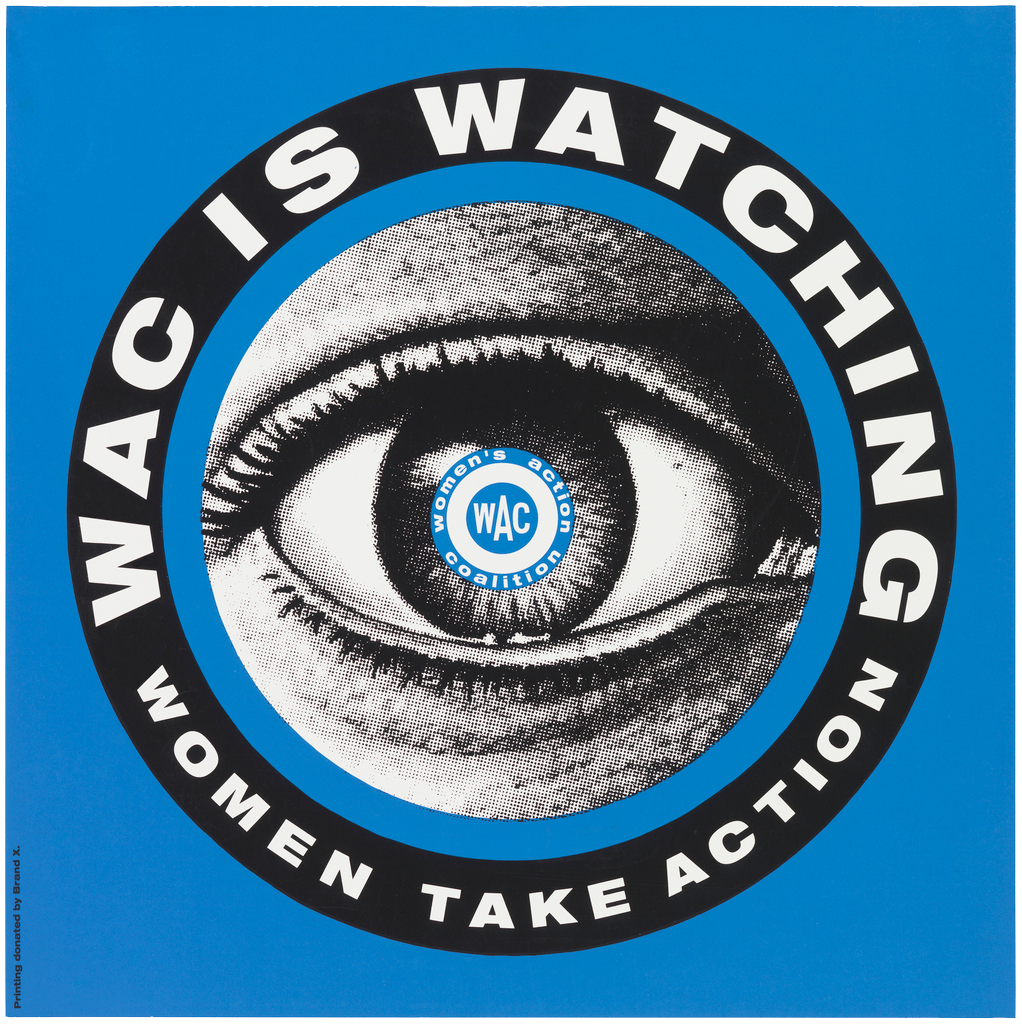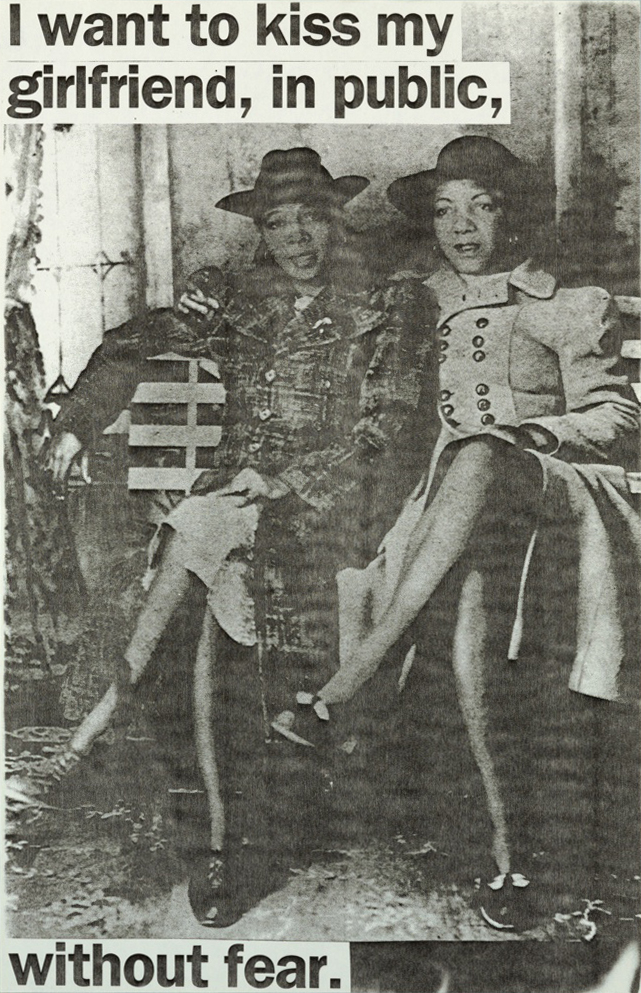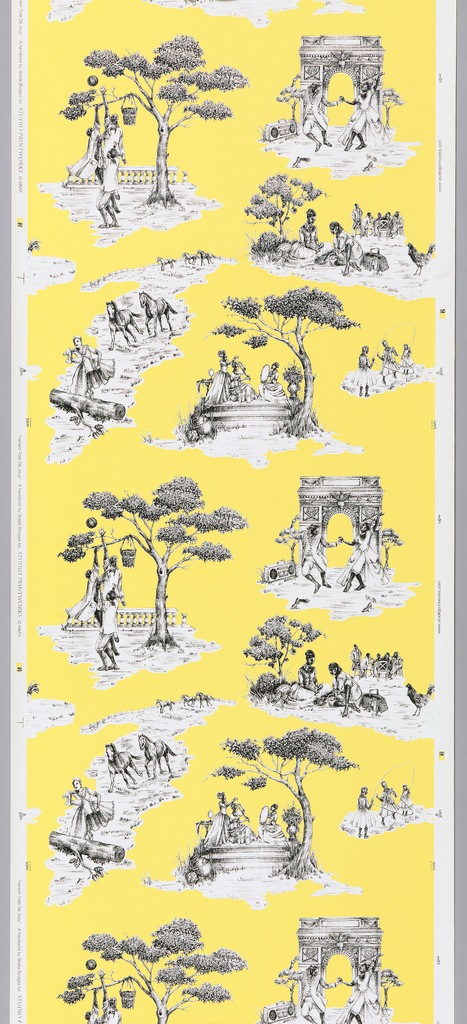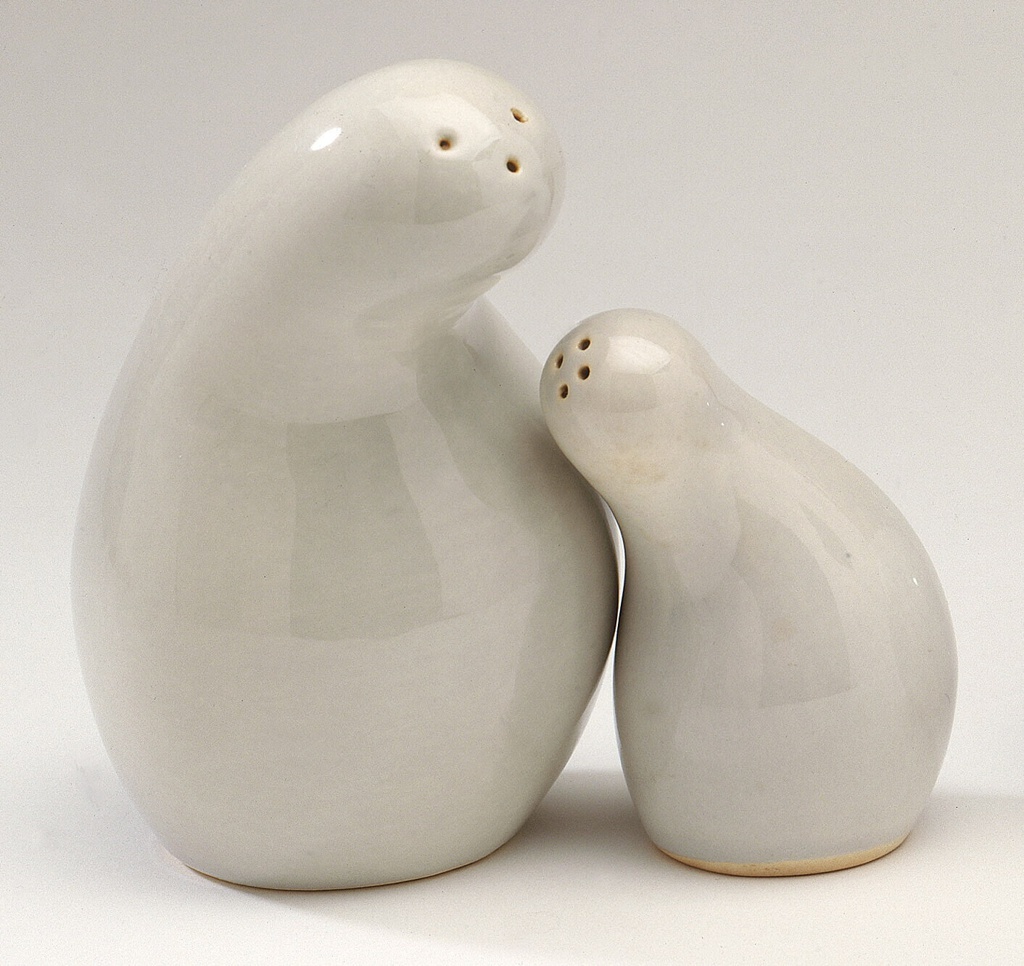Paula Scher and Jenifer Lewis. Althea McNish. The Guerrilla Girls. Marlene McCarty and Women’s Action Coalition. cheap art. Sheila Bridges. Eva Zeisel.
Cooper Hewitt’s Design Topic Women in Design aims to elevate the contributions of women who design in a variety of media. Learn more about the design objects featured in the Topic’s banner image (above) in the list below.
Paula Scher (& Jenifer Lewis)
Poster, The Diva Is Dismissed, 1994
Design by Paula Scher (American, born 1948) for New York Public Theater (New York, New York, USA)
Printed by Ambassador Arts, Inc. (Long Island City, New York, USA)
Screenprint on paper
117.2 × 76.8 cm (46 1/8 × 30 1/4 in.)
Gift of Paula Scher, 1996-88-17
“Imperious and sharply funny, with a brassy pop-gospel voice and hard-edged good looks, [Jenifer] Lewis suggests a composite of Tina Turner, Grace Jones and Bette Midler. Why isn’t she as famous as they?” asked a New York Times review of The Diva Is Dismissed. And that’s apparently the question actress and comedian Lewis humorously posed in her autobiographical one-woman show. As a true diva might demand, the dominant imagery on the poster is the diva’s face, the image of Lewis drawn from promotional photography for the show. Paula Scher focuses her characteristic expressive typography into both a dismissive “x” as well as a visual trumpet for Lewis’s lament.
—Matthew Kennedy, “Black Theater: A Graphic Design Showcase” (Cooper Hewitt, 2021)
Althea McNish
Textile, Van Gogh, designed late 1950s, printed early 1960s
Althea McNish (British, born Trinidad, 1924–2020)
Manufactured by Hull Traders, Ltd. (United Kingdom)
Screen printed on plain-weave cotton
142.2 × 125.7 cm (56 × 49 1/2 in.)
Museum purchase from General Acquisitions Endowment Fund, 2021-1-2
Althea McNish was one of the first Black women designers to receive international recognition for her achievements in design. As a student, she had developed new methods of screen printing that made her painterly style possible and immediately set her apart from her contemporaries. Instead of following the Pop and Op Art influences so prominent in this period, McNish intentionally turned to the vibrant colors and plants of her native Trinidad. The British public, more than ready to abandon the drabness of the postwar period, readily embraced McNish’s bright and vibrant color palette.
—Kimberly Randall, “The Glow of Althea McNish” (Cooper Hewitt, 2022)
The Guerrilla Girls
Poster, Do Women Have to be Naked to Get into the Met. Museum?, 1989
Design by Guerrilla Girls (USA)
Photo-offset lithograph on paper
27.5 × 71.1 cm (10 13/16 × 28 in.)
Gift of Sara and Marc Benda, 2009-20-2
Founded in 1985, the Guerrilla Girls are an anonymous collective of women artists who draw attention to the status of women and people of color in the art world. Fashioning themselves as “masked avengers” in the tradition of Wonder Woman and the Lone Ranger, they wear guerrilla masks to shield their identities during performances and provocations. Their posters use irony and double entendre to bring crisp humor to hard-hitting statistics and commentary. Their work appropriates the rhetorical character of copy-driven advertising rather than formally rich graphic design.
—Ellen Lupton, How Posters Work (Cooper Hewitt, 2015)
Marlene McCarty & Women’s Action Coalition
Poster, WAC Is Watching, 1992
Marlene McCarty (American, born 1957) for Women’s Action Coalition (New York, New York, USA)
Offset color lithograph on paper
57 × 57 cm (22 7/16 × 22 7/16 in.)
Gift of Marlene McCarty, 1996-44-1
Founded in 1992, the Women’s Action Coalition (WAC) staged public demonstrations or “actions” to raise the visibility of women in art, culture, and society. The organization was founded in response to the Clarence Thomas/Anita Hill congressional hearings, which riveted national attention on sexual harassment. The wide-open eye logo, designed by Marlene McCarty and Bethany Johns, signaled that WAC’s members were paying attention. The poster was watching, and so was WAC.
—Ellen Lupton, How Posters Work (Cooper Hewitt, 2015)
Read more about this design on Cooper Hewitt’s Object of the Week.
cheap art
Poster, I want to kiss my girlfriend, in pubic, without fear., ca. 1980
cheap art
Photocopy of a photograph on paper
43.4 × 28 cm (17 1/16 × 11 in.)
Gift of Steven Heller and Karrie Jacobs, 1993-53-95
The collective named cheap art is credited with creating a number of posters in Cooper Hewitt’s collection. The posters address harassment in public and capture the fears of LGBTQ+ individuals in expressing affection or even being identifiable as gay in public spaces. Writer Karrie Jacobs describes this type of activist postering, often made using inexpensive materials and copy machines: “Much of it is so raw and so ephemeral that it’s hard to think about it as design.” Through these mundane aesthetics, the poster conveys a powerful, stark message about fear, acceptance, and love.
Sheila Bridges
Sidewall, Harlem Toile de Jouy, 2006
Designed by Sheila Bridges (American, born 1964)
Made by Studio Printworks
Ink on coated paper
457.2 × 68.6 cm (15 ft. × 27 in.)
Gift of Studio Printworks, 2007-42-1
Sheila’s Harlem Toile is an interesting adaptation and was created out of her love for toiles and her inability to find the perfect toile for her own home. Toile designs frequently portray pastoral or historic scenes, but she has used the toile format to tell a different story: a satire about African American life as often seen through the distorted lens of the media. While her characters are performing everyday activities such as shooting hoops, dancing to a boom box, or playing Double Dutch, the figures are all dressed in 18th-century attire, which creates a fun and contemporary interpretation of a centuries-old style.
—Gregory Herringshaw, “Harlem Views” (Cooper Hewitt, 2017)
Eva Zeisel
Pepper and Salt Shakers from Town and County Service, 1947
Eva Zeisel (American, born Hungary, 1906–2011)
Manufactured by Red Wing Potteries (Red Wing, Minnesota, USA)
Earthenware, cork
Pepper: 11.3 × 7.2 × 6.9 cm (4 7/16 × 2 13/16 × 2 11/16 in.); Salt: 7.5 × 5.4 × 4.6 cm (2 15/16 × 2 1/8 × 1 13/16 in.)
Museum purchase from Charles E. Sampson Memorial Fund, 2000-24-1-a,b, -2-a,b
In Zeisel’s book, Eva Zeisel On Design: The Magic Language of Things, the designer eloquently discusses “togetherness,” which describes her holistic approach to design: “I have rarely designed objects that were meant to stand alone. My designs have family relationships. They are either mother and child, siblings, or cousins. They might not have identical lines, but there is always a family relationship.” Zeisel’s fluid sculptural forms show her brilliant skills as both a ceramicist and designer.
—Catherina Acosta, “Coming Together” (Cooper Hewitt, 2016)
